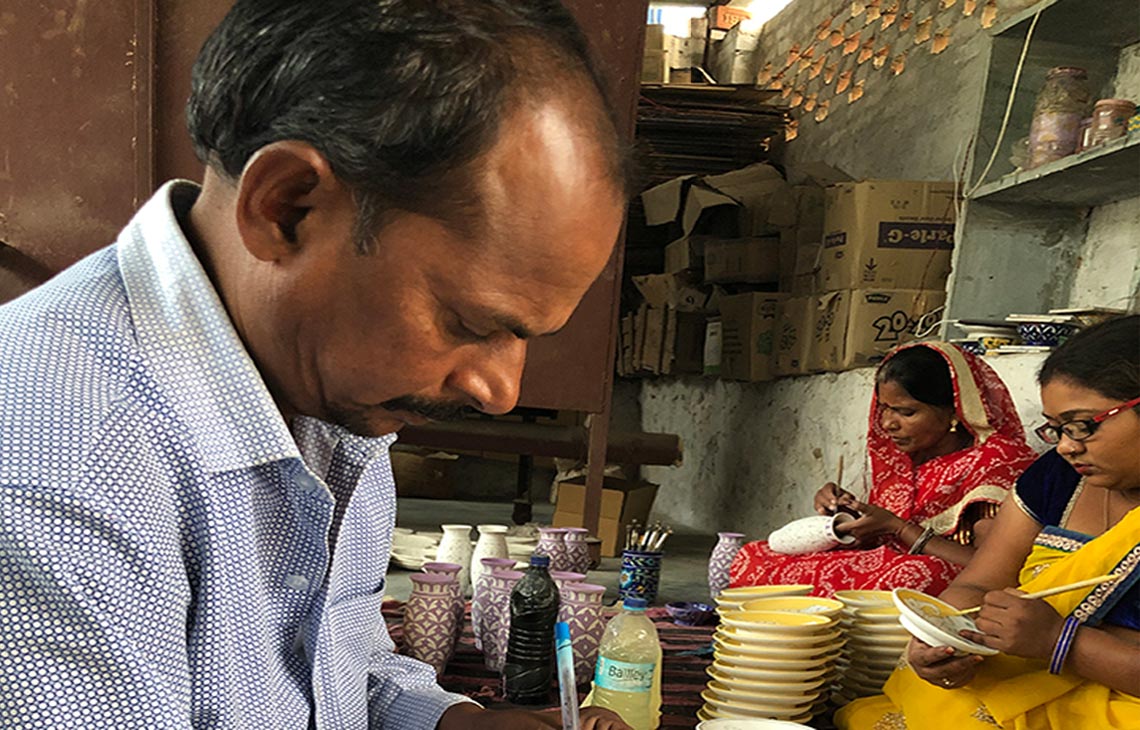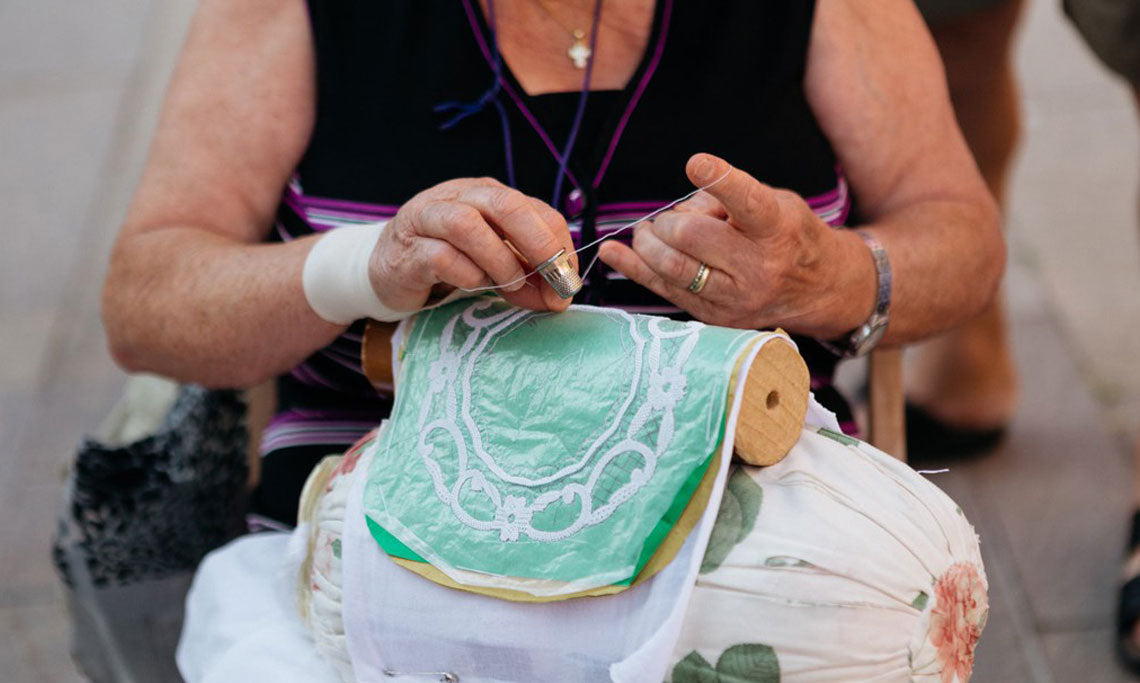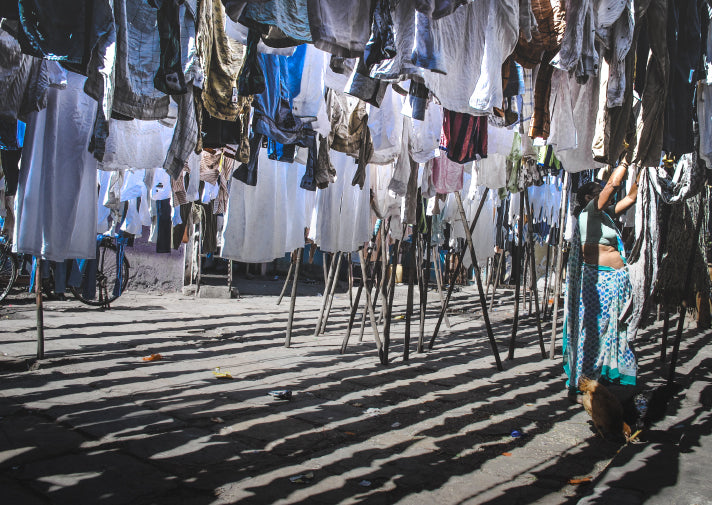
Who values artists in India?

Who values artists in India?
We asked ourselves this question during our entire trip to the land of Rajasthan, towards the town of Barmer.
In this small and rural city, blue pottery is a traditional craft which has been practiced for more than a few 100 years. Right here our brand has made a wonderful collaboration with a small artisan workshop run by women only, the mothers of creation.
We have commissioned them the first table service with the “Out There” design that will be used during the first pop up event of our brand in Autumn in New York.

But what do you know about this wonderful art?
In the 19th century, during the reign of Sawai Ram Singh II, the blue pottery craft made its entry in Rajasthan. The name ‘blue pottery’ derives from the eye-catching blue dye that is used to color it.
A blend of powdered quartz stone, powdered glass, fuller’s earth borax, gum and water is mixed together to create a dough and later glazed and baked in low fire. Due to its brittle nature, this pottery art suffers 50 to 60 percent loss while making. Earlier this art was widely popular and many villages, especially within the periphery of Jaipur, used to earn their livelihood through its trade.

Beauty for beauty or beauty to survive?
Today more than 10 families continue this hand-dying handcraft in the area. Artists are getting older and the new generation does not want to continue with blue pottery as it does not generate good money. Moreover, this art form is wrongly categorized in ceramic whereas it is a stone product.
Mostly, the artisan or their family members carry out each and every stage of the production process right from raw material to finished products. They are using traditional methods for grinding of raw material, preparation of color and fabrication of the articles of blue art pottery but some units are only partially equipped with machines. The traditional technique requires sun rays for which no work can be done during the rainy season.

The artisans’ complaint
During our visit, we realized how much this beauty is in difficulty due to the lack of help: our artisans complain of unavailability of proper tools and subsidy by the government. They need to earn money and that is why they have started painting on kettles and lanterns so that their work does not stop.They cannot shift to the electric furnace as it has iron and magnesium which damage the product.
If we look at the social condition of the artisans involved in this craft, we find it pathetic. Most of the artisans are either uneducated or suffer from a low education background. There is an urgent requirement of intervention at every level from production to end user.

For every collection, we have a mission
The purpose of our brand with this community is to raise awareness of the craftsman’s sense of a more current and refined design, in line with the demands of the modern market. Our action in the field is to document the mutual learning process that takes place between us and the craftsmen. It is not a purely working relationship, but a true communicative bond that is established which allows us to tell humanity what this art encloses and hides within itself.
A humanitarian bond that is usually placed in the second or third layer, which actually represents the true focus and fulcrum of the culture of these lands.

How would we describe our brand design?
The best answer lies in two hands intertwined in the act of creation, in the act of meeting and respect. Sharing culture means generating new identities which nurture the age old traditions and bring in the modern to sustain the future.


